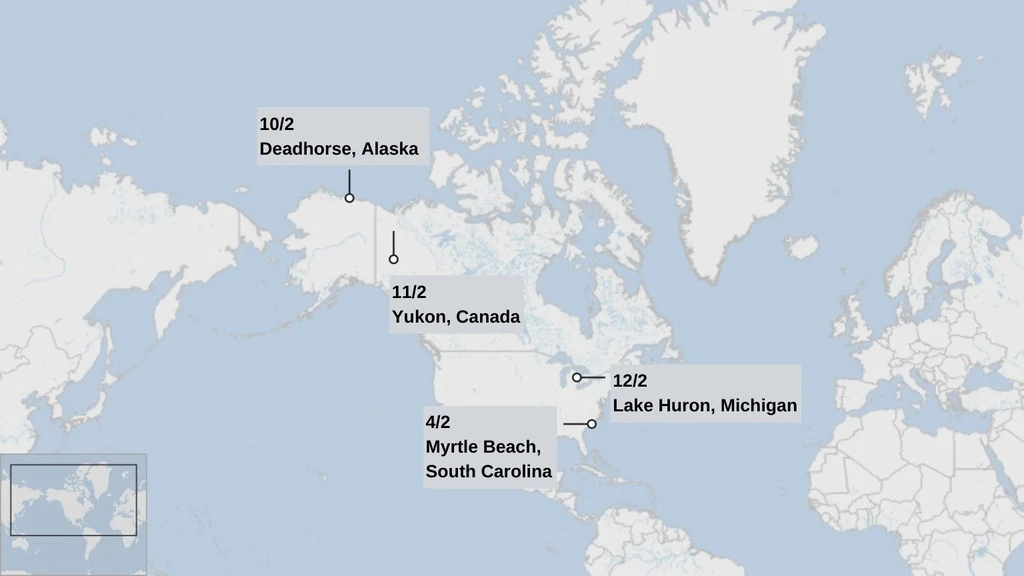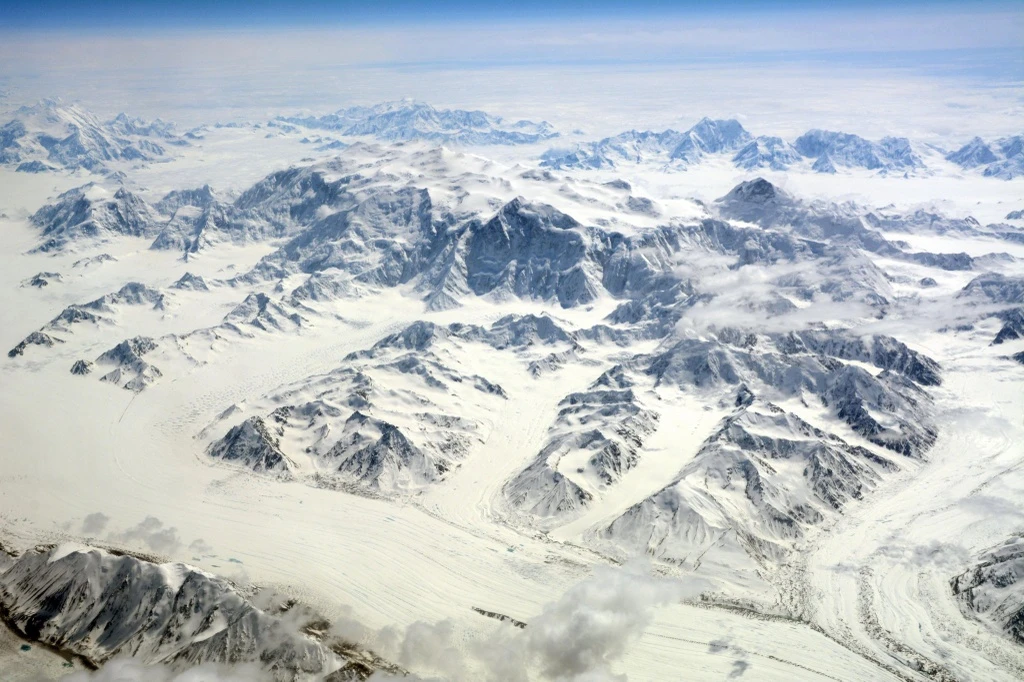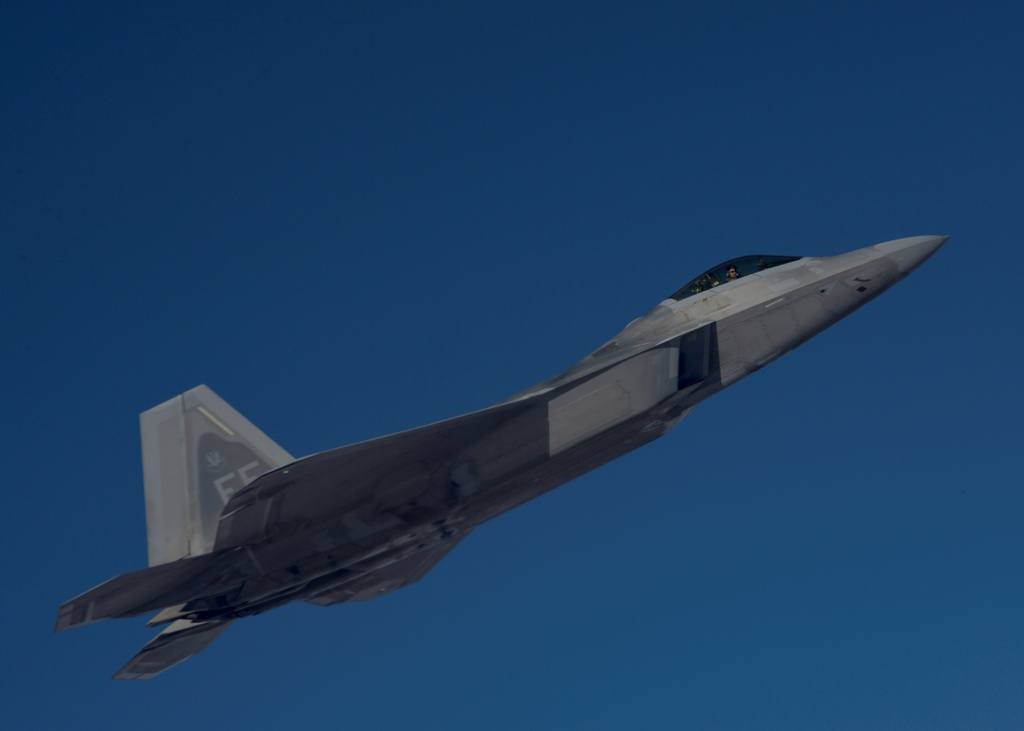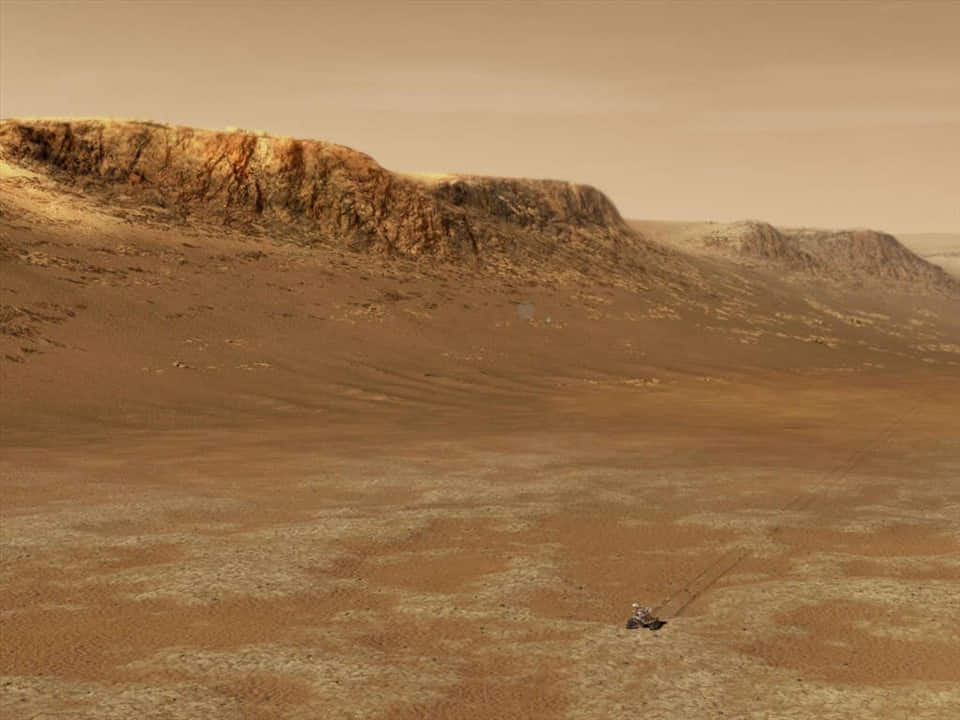In Yukon, Canada – a place known as the airplane graveyard – a difficult search is taking place after an unidentified flying object was shot down on February 11.
A rugged, bumpy, “uninhabited” terrain, Yukon (Canada) is considered a graveyard for airplanes, with more than 500 airplanes crashing in forests, mountains and lakes over the years.
But now, amid the cold winter weather, the Canadian military and police, along with their American counterparts, are struggling to find a mysterious object that was shot down by a fighter jet on November 11. /2.
To date, little is known about this object, except that it was described by Canadian Defense Minister Anita Anand as “cylindrical”.

An F-22 fighter belonging to the North American Air Defense Command (NORAD) shot down a UFO as it flew over Canada on February 11. This is the third object shot down after the US shot down and partially recovered a Chinese hot air balloon off the coast of South Carolina, according to the Guardian.
On February 14, the White House said the object in the Yukon, and two objects shot down in Alaska and Michigan (USA), may be related to some “benign” commercial or research purposes, Reuters reported. believe.
History of searches in the Yukon
Search teams were quickly dispatched to the Yukon, an area with temperatures hovering around -25 degrees Celsius. However, Ms. Anand did not have high expectations that they would find and recover the debris.
“The terrain is very difficult. It’s extremely remote,” she told reporters.
Of the hundreds of planes that have crashed in the area over the years, a few have never been found, including a giant military transport plane with 44 people on board.
The disappearance of the American Douglas C-54 Skymaster in 1950 also led to one of the largest recovery missions ever conducted on the North American continent. But 70 years later, no trace of the plane has been discovered.

Incidentally, this area at that time planned military exercises, so nearly 7,000 soldiers also participated in the search. More than 80 large aircraft performed search missions everywhere, but to no avail.
Still, David Downing, head of the Yukon Civil Aviation Search and Rescue Association, says there have been important changes since the Skymaster disappeared.
“There is a huge fundamental difference. Today’s air force are search experts. They know what they are doing. They know what works and what doesn’t work,” he said. “The previous approach used to be to bring in more planes and more people to search. But now, they have seven decades of experience and better equipment.”
The Canadian Air Force sent several aircraft, including a Hercules search and rescue aircraft, as well as two smaller Twin Otter aircraft and helicopters. These are aircraft that can fly low and slow.
Difficult search conditions
What hasn’t changed, however, is the very difficult terrain and search conditions.
Because the search area was so far north, teams had limited time to take advantage of daylight. This narrows the search that can be performed.
Besides, this area has many dense forests. Low-level clouds, dense cover and snow showers also hampered initial search efforts.
“If they’re looking for something white, non-reflective and deflated, with this wind and snow, it could be covered in a matter of hours,” Mr Downing said.
“I don’t underestimate the challenges they face. Even if they fly over the debris, even if it is right in front of them, the possibility of them missing it is very high,” he added.

Mr. Downing pointed to a recent plane crash in British Columbia. For weeks, search teams thoroughly combed the area along the plane’s route but to no avail. Eight months later, a helicopter pilot, traveling on the same route, was the one who discovered the debris.
The Canadian military said wind direction models have been studied and applied to help narrow the search area. However, officials noted they were searching a snow-covered area of nearly 3,000 square kilometers.
“We’re looking at a very large area,” said Sean McGillis, acting deputy commissioner of federal police programs at the Royal Canadian Mounted Police.
“Unfortunately, the mountainous terrain is very difficult. Weather conditions are not good. Snow and ice levels in the area are very high. So our efforts will be difficult. It will be a challenge. It will take us some time,” he shared.
Still, Mr. Downing said that probably won’t stop “amateur hunters” from entering the area to search on their own.
“There were probably a few snowmobilers who started looking,” he said.

McGillis said the military is also sending in experts with experience handling hazardous materials, including people with “chemical, biological (and) radiological backgrounds,” because the search team knows little about downed object.
Despite significant advances in search-aiding technology, nature remains the greatest enemy.
“I would be surprised if they found anything,” Mr. Downing said. “Their task is very, very difficult.”
The unidentified object shot down by a US fighter jet over northern Canada on February 11 was a “small, metal balloon with a payload strapped underneath it”, CNN cited a memo. of the Pentagon.
US National Security Council spokesman John Kirby affirmed that the country still does not know for sure the origin of the three new flying objects. According to him, they will have more information when the debris is collected, but many of its parts are located in hard-to-reach areas.





